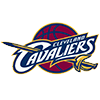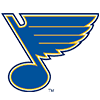Tiering is one of the most popular ways to prepare for a Fantasy basketball draft. Within each position group, separating players into tiers is an effective means of projecting general value and keeping organized during your draft. If you're in a position where you need to make a quick decision, consulting a set of tiers can help settle the debate between two players who are relatively close in value.
Entering the 2021-22 season, the NBA's talent pool is once again incredibly deep, so going into your drafts with a plan is more imperative than ever. Early on, drafting the top talents should be the priority, but as the draft progresses, it's important to be cognizant of which positions you're stocking up on and which you'll need to target in the mid-to-late rounds. Tiers can help achieve the roster balance most fantasy managers are hoping to come away with.
Here are our power forward tiers, which can serve as a general guide for those playing in standard leagues.
Tiers assume eight-category settings. Each player only appears in one set of tiers. Players are assigned to the position at which they're likely to play the most.
TIER 1
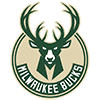 Giannis Antetokounmpo, Bucks
Giannis Antetokounmpo, Bucks
The reigning Finals MVP's struggles at the charity stripe are well-documented, and it's the one category that prevents him being in the No. 1 overall pick conversation. Antetokounmpo takes enough free throws (9.8 FTA/G) that he still finished outside the top
Tiering is one of the most popular ways to prepare for a Fantasy basketball draft. Within each position group, separating players into tiers is an effective means of projecting general value and keeping organized during your draft. If you're in a position where you need to make a quick decision, consulting a set of tiers can help settle the debate between two players who are relatively close in value.
Entering the 2021-22 season, the NBA's talent pool is once again incredibly deep, so going into your drafts with a plan is more imperative than ever. Early on, drafting the top talents should be the priority, but as the draft progresses, it's important to be cognizant of which positions you're stocking up on and which you'll need to target in the mid-to-late rounds. Tiers can help achieve the roster balance most fantasy managers are hoping to come away with.
Here are our power forward tiers, which can serve as a general guide for those playing in standard leagues.
Tiers assume eight-category settings. Each player only appears in one set of tiers. Players are assigned to the position at which they're likely to play the most.
TIER 1
 Giannis Antetokounmpo, Bucks
Giannis Antetokounmpo, Bucks
The reigning Finals MVP's struggles at the charity stripe are well-documented, and it's the one category that prevents him being in the No. 1 overall pick conversation. Antetokounmpo takes enough free throws (9.8 FTA/G) that he still finished outside the top 10 in per-game value last season, despite averaging 28.1 points, 11.0 rebounds, 5.9 assists, 1.2 steals and 1.2 blocks and 1.1 threes per game.
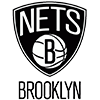 Kevin Durant, Nets
Kevin Durant, Nets
On a per-game basis last season, Durant ranked only behind Nikola Jokic, Stephen Curry and James Harden. However, he missed more than half of the regular season, appearing in just 35 of a possible 72 games. Durant is so good when healthy that he'll still be a top-five pick in many leagues, but as he heads into his age-33 season, the possibility of missed games will continue to hang over his head -- especially with the Nets' focus set squarely on making the NBA Finals.
 Jayson Tatum, Celtics
Jayson Tatum, Celtics
A steady improver in each of his first four NBA seasons, Tatum took another leap in 2020-21, posting a career-best 26.4 points per game en route to ranking 15th in per-game value. There's reason to believe the 23-year-old can get even better, though he should have a bit more help this season. Nevertheless, Tatum is a premier scoring talent who adds rebounds, assists, steals and threes while maintaining a strong free throw percentage (86.8% FT).
 Anthony Davis, Lakers
Anthony Davis, Lakers
Coming off of a dominant postseason run in the Orlando bubble, expectations were high for Davis last season, but he struggled to stay healthy (36 missed games) and even when he was on the court, he never looked quite like himself. Davis regressed in every significant category and struggled to space the floor (26% 3PT) one year after converting 33 percent of his attempts from three. Chances are, Davis will be available at a relative discount in drafts, and while the Lakers added another high-usage star in Russell Westbrook, Davis could be well-positioned for a bounceback campaign.
TIER 2
 Julius Randle, Knicks
Julius Randle, Knicks
In his second season with the Knicks, Randle took his game to a new level, averaging a double-double with 6.0 assists per game. For fantasy purposes, it helped that Randle missed only one game and led the league in minutes, propelling him to a career-best-by-far sixth place finish in eight-category total value. Given how heavily the Knicks leaned on Randle last season, he's a natural candidate for at least some regression, but this is clearly his team, and the arrival of Evan Fournier in free agency won't change that.
 Zion Williamson, Pelicans
Zion Williamson, Pelicans
Coming off of an injury-plagued rookie year, Williamson delivered on the hype, appearing in 61 games and averaging 27.0 points per game on better than 60 percent shooting. Given the volume, he's the single most valuable player when it comes to field goal percentage, though Williamson is a glaring negative at the free throw line. That, coupled with unspectacular defensive production, landed Williamson outside of the top 50 in per-game value last season. Chances are, that ranking will rise over the next few seasons, but unless he becomes a much better free throw shooter, there will always be a ceiling on his value.
 Domantas Sabonis, Pacers
Domantas Sabonis, Pacers
The 25-year-old continues to improve with each passing season, and he finished 2020-21 ranked a career-high 17th overall in per-game value. A nightly double-double who adds elite assists production for a big man, Sabonis also topped 1.0 steal per game for the first time and started to look more comfortable shooting threes (0.8 3PM/G). Free throw percentage remains a hindrance, but the rest of Sabonis' stat profile is well-rounded enough to make up for it.
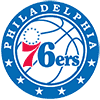 Tobias Harris, 76ers
Tobias Harris, 76ers
Harris may not be the most fun player to manage, but he's been among the most consistent at his position for the last several years. He's put up almost identical numbers over the last two seasons, but he shot better than 50 percent from the field (51.2% FG) in 2020-21 for the first time in his career. The fact that he rarely misses games is another mark in Harris' favor.
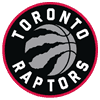 Pascal Siakam, Raptors
Pascal Siakam, Raptors
Siakam is coming off of a relatively disappointing season, but he still put up borderline-All-Star-caliber numbers in 56 appearances. It's concerning that Siakam's three-point efficiency fell off of a cliff, but he improved at the free throw line and remains a high-floor option who could be set for a bounceback season.
TIER 3
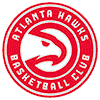 John Collins, Hawks
John Collins, Hawks
The soon-to-be-24-year-old is coming off of another solid season, though his numbers took a step back with the Hawks fielding one of the deepest roster in the league. Collins averaged just 29.3 minutes per game -- down from 33.2 per game in 2019-20. Virtually all of Atlanta's key contributors are back this season, so it wouldn't be a surprise if Collins' workload once again hovers around the 28-to-32-minute range.
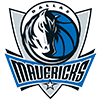 Kristaps Porzingis, Mavericks
Kristaps Porzingis, Mavericks
Coming off of another injury-shortened season (43 games), Porzingis' reputation and potential continue to outpace his actual fantasy value. When healthy, he's unique blend of scoring, high-volume threes, blocks and rebounds, but Porzingis simply hasn't been able to stay healthy since tearing his ACL back in 2018. He's still tantalizing enough to be worth a mid-round pick, but any manager investing in Porzingis must come to terms with the risk.
 Jaren Jackson Jr., Grizzlies
Jaren Jackson Jr., Grizzlies
Recovery from a knee injury kept Jackson out of all but 11 games last season, so it's been a while since we've had a chance to truly evaluate the 22-year-old. Jackson has missed significant time in all three seasons to begin his career, but when he's on the floor he's a good source of scoring, blocks, steals and threes. The defensive numbers, in particular, are appealing, and they help offset Jackson's poor rebounding for his size and position.
 Draymond Green, Warriors
Draymond Green, Warriors
While Green's scoring and shooting seem to deteriorate on an annual basis, he remains arguably the best and most versatile defensive player in the league. A unique fantasy player, Green racked up 1.7 steals per game last season while adding a career-high 8.9 assists and 7.1 rebounds per game. He doesn't contribute much as a scorer, but his lack of volume prevents his subpar field goal percentage from being overly damaging.
TIER 4
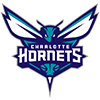 P.J. Washington, Hornets
P.J. Washington, Hornets
A top-80 player last season, Washington essentially replicated his rookie-year production while adding more threes, more blocks and improving at the free throw line. If he can take another step forward, Washington could be one of the year's fantasy breakouts, but it's fair to question just how much his role could increase in a relatively crowded frontcourt rotation.
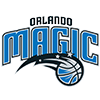 Chuma Okeke, Magic
Chuma Okeke, Magic
After missing his entire rookie year while recovering from a torn ACL, Okeke showed flashes of his well-rounded fantasy potential last season. Over his final 18 games, Okeke averaged 12.8 points, 4.8 rebounds, 2.8 assists, 1.5 steals, 0.7 blocks and 1.5 threes per game while shooting 45 percent from the field and 81 percent at the line. Expect the Auburn product to take on a larger role for one of the league's bleakest rosters this season.
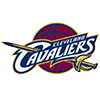 Lauri Markkanen, Cavaliers
Lauri Markkanen, Cavaliers
While Markkanen was able to shoot the ball efficiently and salvage a decent 2020-21 season in Chicago, he clearly needed a change of scenery. Now in Cleveland, Markkanen gets a fresh start, but he joins a crowded frontcourt that also features Jarrett Allen, Kevin Love and No. 3 pick Evan Mobley. At this stage, it's unclear how the Cavs will sort out the logjam, but the ideal scenario would be finding a way to move on from Love.
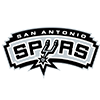 Keldon Johnson, Spurs
Keldon Johnson, Spurs
Coming off of a solid second season, and a summer spent with Team USA, Johnson looks to be in position for a productive campaign. The Spurs moving on from DeMar DeRozan should free up more possessions, though the additions of Thaddeus Young and Doug McDermott could be minor roadblocks for Johnson. Ultimately, for his fantasy value to rise, Johnson will need to provide more defensive production and/or shoot the three more efficiently (33.1% 3PT last season).
 Aaron Gordon, Nuggets
Aaron Gordon, Nuggets
Gordon's fantasy value plummeted after arriving in Denver last season, and he finished the season ranked outside of the top 160 in per-game value. With multiple top-100 seasons to his name, Gordon is a difficult player to evaluate. He's certainly lost some shine over the last few seasons, but it's hard to imagine the Nuggets not making more of an effort to get the 26-year-old involved this season.
TIER 5
 Thaddeus Young, Spurs
Thaddeus Young, Spurs
Another per-minute fantasy darling, Young took advantage of injuries and opportunity last season in Chicago to finish inside the top-100. The move to San Antonio brings some uncertainty, but Young's versatility should make him a valued asset for Gregg Popovich.
 Kevin Love, Cavaliers
Kevin Love, Cavaliers
For some managers (this one included), Love has officially reached the can't draft him no matter what stage after five straight seasons derailed by injury. In that span, Love has played fewer than 30 games twice while never topping 60 games. Entering the season as more of a contract burden than a true asset, Love's role with the Cavs is on shaky ground, so even if he does manage to stay healthy, his ceiling is lower than in years past.
 Daniel Theis, Rockets
Daniel Theis, Rockets
On paper, the rebuilding Rockets bringing in a 29-year-old big man didn't make a ton of sense, but it could be a productive fantasy situation. Theis has always been a good per-minute source of blocks, rebounds and big-man threes, and he should start up front alongside Christian Wood to begin the year.
 Larry Nance, Trail Blazers
Larry Nance, Trail Blazers
Nance was involved in one of the most fortuitous moves of the offseason when he was shipped away from a chaotic Cavs roster to a Blazers team in dire need of frontcourt depth. As was the case in Cleveland, Nance will likely back up multiple positions, but his size and versatility could lead to the largest role of his career. The 28-year-old has averaged at least 1.0 steal per game in five straight seasons (1.7 SPG last season), and he's recently added a reliable outside shot (1.2 3PM/G last season).
 Kelly Olynyk, Pistons
Kelly Olynyk, Pistons
After joining the Rockets at the trade deadline, Olynyk closed out last season on an impressive run that propelled him to the best fantasy campaign of his career. Over the final seven weeks of the season (29 games), Olynyk ranked as the 12-most-valuable player in all of fantasy basketball. It was likely a one-time run spurred by injuries and a concentrated tanking effort, but Olynyk was so good that he can't be ignored as he heads to Detroit.
Next up: Doug McDermott, LaMarcus Aldridge, Nicolas Batum, Jaden McDaniels, Rui Hachimura, Darius Bazley, Marvin Bagley, Maxi Kleber















